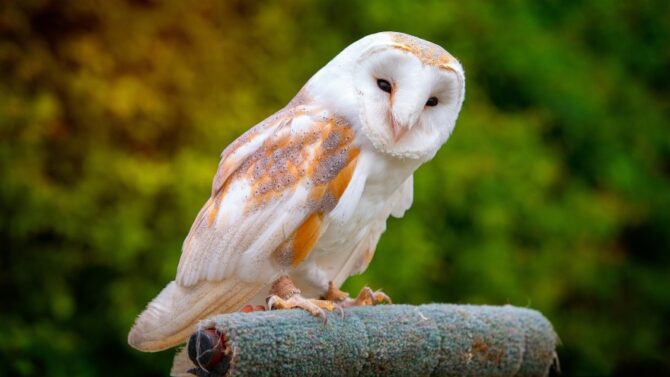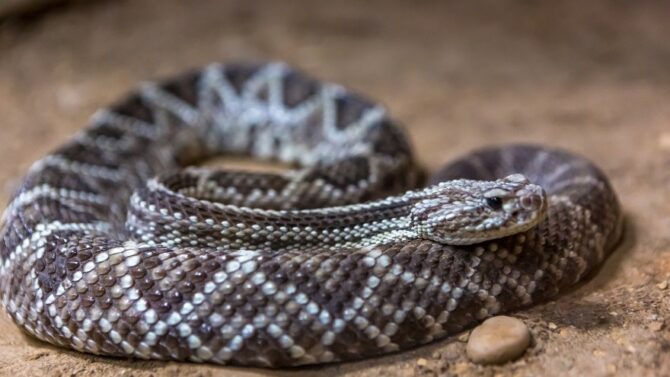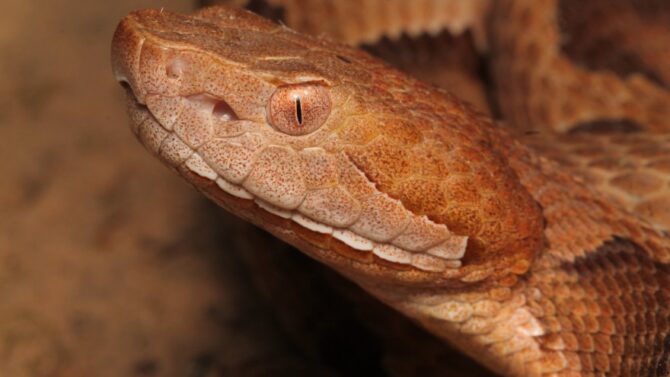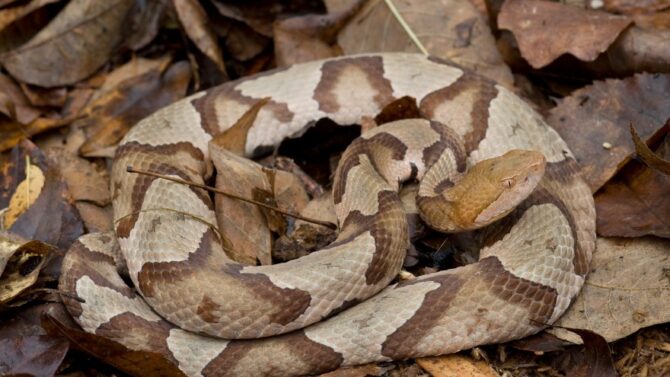The United States is physically diverse, ranging from forests to deserts, plains, river valleys, and rocky mountains.
While these terrains beautify the country, they provide the perfect habitats for wildlife in America, with almost three thousand animal species, albeit insects and other invertebrates occupying these areas.
The United States is home to about 428 mammals, 784 birds, 295 amphibians, 311 reptiles, and 1,154 fishes.
You might know some of these animals, including the American Bison, the country’s national animal, and the bald eagle, its national bird.
However, you should know many more animals, even though you may not know all. This article discusses America’s wildlife – types of animals in the United States of America.
Wildlife in America: Popular Native Animals in the USA
The United States of America houses various wildlife species. However, population, in-culture significance, nearness to urban areas, and tourist attraction numbers ensure the popularity of some animals over others.
The American bison, the United States national animal, readily comes to mind, and here are others.
People are familiar with the deer because Montana, West Virginia, and Pennsylvania have high deer collision rates. Here are America’s top animals.
Bald Eagle
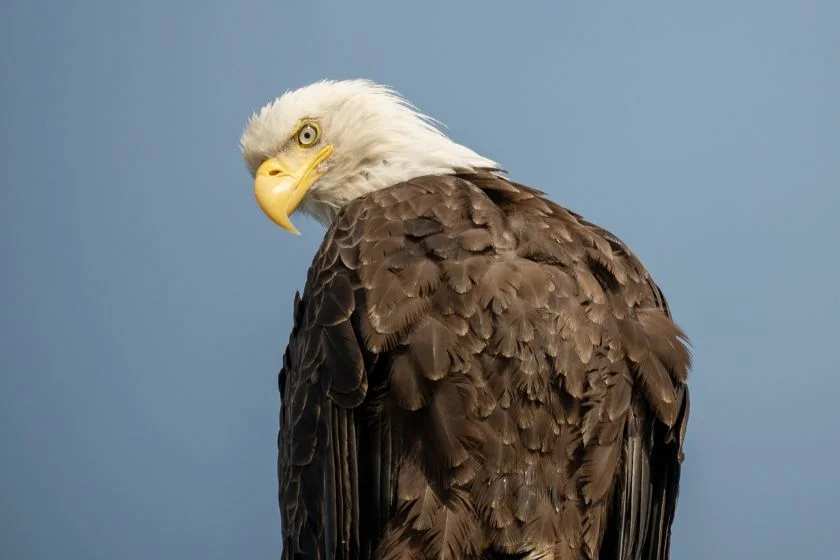
Scientific Name: Haliaeetus leucocephalus
The bald eagle is among the United States’ top wildlife, thanks to its status as the country’s national bird and a stable population that ranks amongst the IUCN’s “least concern” species.
One may be urged to credit the Bald Eagle’s population status to its size, but size comparisons reveal that Bald Eagles are amongst the world’s largest eagle species.
A bald eagle’s wingspan can surpass eight feet, while the bird can reach thirty-eight inches in height and weigh about fourteen pounds.
Large bodies of open water, sufficient food supplies, and old-growth trees for nesting shelter bald eagles along the East and West coasts, in Alaska, the Rocky Mountains, and the Mississippi River.
Cougar
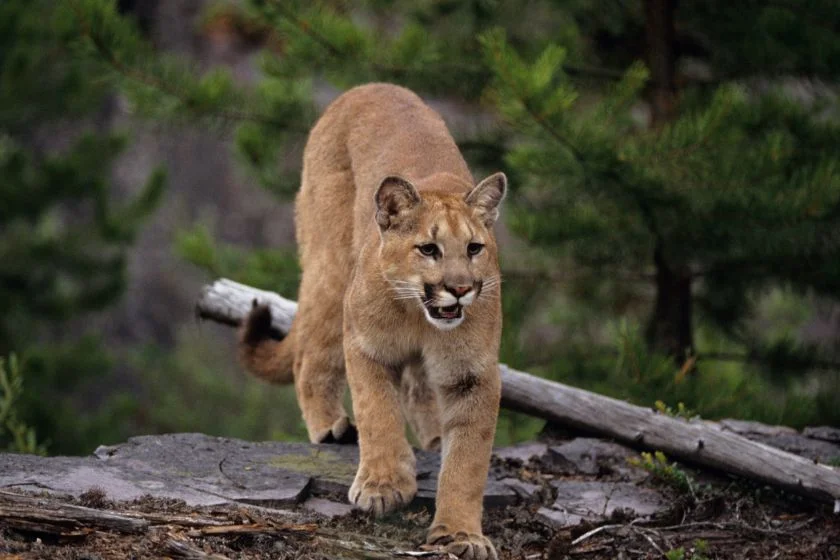
Scientific name: Puma concolor
The cougar is the fourth largest wild cat, endemic to the Americas.
It is an adaptable, generalist species, occupying most American habitats, including sparse vegetation, lowlands, and mountainous deserts, in the United States, Arizona, California, Colorado, Idaho, Montana, Oregon, Utah, and Wyoming record cougar sightings.
American Bison
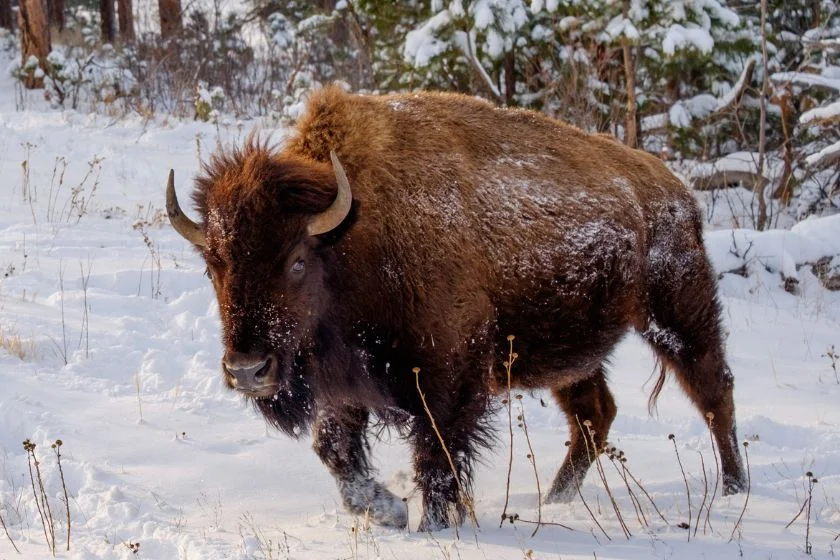
Scientific Name: Bison bison
This large mammal is one of the most popular wildlife in the United States due to its cultural significance as the United States national animal and large size.
It is North America’s largest mammal, weighing up to two thousand pounds and reaching six feet in height.
A pronounced existence in Yellowstone National Park since prehistoric times, and other unmistakable attributes, including weight and speed, make it one of the country’s top wildlife.
The American bison is a herbivore, eating grasses and sedges from grasslands in Alaska, Utah, and South Dakota. Click here for other facts about the United States national animal.
Black Bears

Scientific name: Ursus americanus
The United States forests and mountains house black bears, such that black bears are a usual sight to hikers and campers in the Adirondacks, New York.
This bear species is the most widely distributed in the United States, with an estimated 300,000 in Alaska, North Dakota, Mississippi, Alabama, Kentucky, Missouri, Connecticut, Louisiana, Nevada, Ohio, Oklahoma, Texas, and Wyoming.1
Alaska has the highest black bra population in the country, housing roughly 100,000 individuals.
Black bears are omnivores, enjoying insects, fruits, berries, and sedges as their primary diet, while fish, honeycomb, and other small animals make occasional menus.
Gray Wolves

Scientific Name: Canis lupus
The gray wolf is endemic to North America, with populations in Alaska, Michigan, Wisconsin, Montana, Idaho, Oregon, and Wyoming in the United States.
This wolf is a large canine preying on the caribou, moose, deer, bison, and other small animals to consume approximately four pounds per day.
Tundras, woodlands, forests, grasslands, and deserts house these canines, where they hunt in packs.
North American Beaver

Scientific Name: Castor canadensis
The North American beaver calls the continent’s cold temperate region but gains more cultural significance as Oregon and New York’s official state mammal.
One can find American beavers in ponds, rivers, lakes, streams, marshes, and wetland areas.
These rodents occupy most parts of the country, except for most of Florida, northern Alaska, the California and Nevada deserts, and parts of Utah and Arizona.
The North American Beaver’s IUCN “least concern” status is impressive since poaching and trapping almost brought it to a near-extirpation in the nineteenth century.
Endemic Species in the United States
While almost three thousand animal species live in the United States, their origination is not tied to areas within the country. Now we will consider some species native to the United States.
Mohave Ground Squirrel
Scientific Name: Xerospermophilus mohavensis
Conservation Status: Near Threatened
The Mohave ground squirrel is one rodent that readily comes to mind when referring to an animal with highly developed survival skills for an extreme environment.
The Mohave ground squirrel is not notable for size, being a small rodent that measures about nine inches.
However, its elusiveness in the Californian habitat and the small size of its geographical range makes it one of the animals worthy of conservation efforts. The Mohave ground squirrel is indigenous to the western Mojave desert.
Gila Monster
Scientific Name: Heloderma suspectum
Conservation Status: Near Threatened
The Gila monster has a fearsome reputation that precedes it — a venomous reptile with an excruciating bite. The Gila monster is the largest extant lizard species native to North America.
Its range includes oak woodlands, deserts, and scrublands in southwestern Utah, New Mexico, Arizona, southeastern California, and southern Nevada.
However, the reptile’s existence traces back to the Gila River Basin in New Mexico. Gila monsters seek shelter in thickets, burrows, and under rocks. Sadly, they are flagged as “near threatened” by the IUCN.
Black-Footed Ferret
Scientific Name: Mustela nigripes
Conservation Status: Endangered
Like the European and Asian steppe polecats, the black-footed ferret, also called the American polecat, is a weasel.
A highly contrasted coat color differentiates this species from its European and Asian cousins; black-footed ferrets have greater contrasts between their dark limbs and pale bodies, outlined with dark furs on their paws, tails, ears, and parts of their faces.
The black-footed ferret hunts prairie dogs and is also known as the prairie dog hunter as it roamed the North American Great Plains, where these rodents thrived.
The black-footed ferret is endemic to the United States, inhabiting the intermountain prairies and grasslands of Wyoming, Arizona, South Dakota, and Montana.
Utah Prairie Dog
Scientific Name: Cynomys parvidens
Conservation Status: Endangered
The Utah prairie dog is nothing like a dog but a rodent, the smallest of the prairie dog species, endemic to Utah, USA.
They differ from other prairie dogs with a short white-tip tail and black fur above their eyes. Utah prairie dogs are herbivorous, favoring marshy areas with sufficient herbaceous plants.
Sadly the species is endangered, with a few individuals left in southern Utah.
Giant Kangaroo Rat
Scientific Name: Dipodomys ingens
Conservation Status: Endangered
Kangaroos are native to Australia, but the giant kangaroo rat is endemic to the American state of California.
The rodent is an endangered species, according to the IUCN; it inhabits less than two percent of its native range, with insignificant populations in isolated areas within California.
The giant kangaroo rat occupies dry, sandy grasslands, digging burrows in loose soil.
Idaho Ground Squirrels
Scientific Name: Urocitellus
Conservation status: Endangered
The Idaho ground squirrels include two species, the northern and southern Idaho ground squirrels, under the genus Urocitellus.
These species inhabit dry, rocky meadows, basins, rolling hills, flat plains, and ground with deep soil and ponderosa pine in the northern and southern parts of Idaho.
Endangered Species in the United States
Not all species in the United States have a decent breeding population. Some thrive as their populations increase or remain stable, while others face the sad reality of becoming extinct in the coming years.
Here are some of the country’s endangered animals.
Red Wolf
Scientific Name: Canis rufus
Conservation Status: Critically Endangered
Like the gray wolf, the red wolf is a canine under the genus Canis, but a more reddish and sparsely furred appearance differentiates both species.
Endemic to North America, the red wolf once occupied a large part of the continent, from the United States to Canada and Mexico. Sadly, it is facing extinction as a critically endangered species.
Only an estimated thirty-five or fewer remain in eastern North Carolina, inhibiting swamps, forests, and coastal prairies.
Red wolves are carnivores, common traits all canines share, hunting white-tailed deer, raccoons, and small mammals like mice and rabbits.
California Condor
Scientific Name: Gymnogyps californianus
Conservation Status: Critically Endangered
The California condor is North America’s largest land bird and a native of the continent.
Sadly, it became extinct in the wild in 1987 and is now elusive in most parts of the continent, except in the coastal mountains of California, northern Arizona, and southern Utah in the United States.
While breeding populations exist in the wild sequent to the reintroduction of captured individuals, the bird has not escaped the sad reality of possible extinction. Therefore, the IUCN believes it is a critically endangered species.
The California condor inhabits rocky shrublands, coniferous forests, and oak savannas, where they nest in cliffs or large trees.
The New World vulture benefits from a conservation project, possibly one of the United States costliest species conservation projects, worth over $35 million at a $2 million per annum average.2
Florida Panther
Scientific Name: Puma concolor coryi
Conservation Status: Critically Imperiled
Florida Panther is a cougar subspecies endemic to the American state of Florida and the state’s official animal.
While the regular cougar species (Puma concolor) occupy most American habitats, including sparse vegetation, lowlands, and mountainous deserts, the Florida Panther (Puma concolor coryi) inhabits pinelands, tropical hardwood hammocks, and mixed freshwater swamp forests.
Florida Panther populations exist in South Florida to date but are flagged “Critically Imperiled” under the NatureServe conservation status.3
Gunnison Grouse
Scientific Name: Centrocercus minimus
Conservation Status: Endangered (Population decreasing)
The greater sage-grouse is a grouse species endemic to North America; it is the largest grouse in the United States and Canada. The Gunnison grouse is similar but lesser in size and geographic range.
The Gunnison grouse differs from other grouse species, particularly the Gunnison grouse with thicker plumes behind its head.
However, it is three times smaller and restricted to the Gunnison Basin in southwestern Colorado and extreme southeastern Utah.
The Gunnison grouse experiences what many species with such a small range suffers, a sad reality of possible extinction. Therefore, the Gunnison grouse is an endangered species due to habitat loss.4
The bird’s population keeps plummeting to perilous lows despite being protected under the Endangered Species Act by the United States Fish and Wildlife Service since 2015.5
Hawaiian Hawk
Scientific Name: Buteo solitarius
Conservation Status: Near Threatened
Like the Gunnison grouse, the Hawaiian hawk is another threatened species in the United States. The hawk is endemic to Hawaii Island (The Big Island) in the American state of Hawaii.
While the Gunnison grouse suffers a worse fate, earning a lower rating on the IUCN Red List category, the Hawaiian hawk suffers habitat loss, starvation, predation, and a population decline due to illegal shooting, vehicle collisions, and invasive plant species.
Most Dangerous Animals in the United States
The United States’ diverse wildlife contains some animals notorious for aggressiveness and territorial traits.
The American bison, cougar, black bear, and gray wolf rank among the most dangerous animals in some American states.
Still, insects like the black widow spider and reptiles like snakes and alligators are some more dangerous animals you must try to avoid. Here are some of the United State’s most dangerous animals.
Deer
Scientific name: Cervidae
The deer is one of the United States’ most dangerous animals, coursing through fields and forests or across the roads in many American states.
Iowa, Idaho, Kansas, New York, and Oregon all record deer sightings and the animal ranks are amongst the most dangerous in these states.
In Oregon, deer-vehicle collisions result in about 200 deaths and $1.1 billion of property damage annually.6
They are also dangerous to humans in confinement or when threatened; little wonder hunters record casualties from injured deer because injured animals can be very aggressive.
Moose
Scientific Name: Alces alces
Like the deer, its family-related species, the moose is one of the United States’ most dangerous animals.
While it occupies temperate broadleaf, mixed and boreal forests in the wild, the moose poses a more significant threat of attack in some American states due to its population size. For instance, between 10,000 and 12,000 moose live in Idaho.7
However, the animal’s intimidating size and deadly enters are other reasons its territories are flagged as “Danger Zone.”
A moose can reach 6.5 feet in shoulder height, and mature bulls have wide antlers of over six feet, which they use to defend themselves when they feel threatened.
American Alligator
Scientific name: Alligator mississippiensis
The American alligator is largely endemic to the United States, but a small population exists in Mexico. However, it is one of the United States’ most feared animals due to its terrifying reputation as a non-human-friendly reptile.
The American alligator lives in lakes, marshes, swamps, and slow-moving rivers in South Carolina, North Carolina, southern Florida, and eastern Texas.
Therefore, swimming with an American alligator in the same river would be a grievous mistake, as the reptile can generate about 300 pounds per square inch.8
Raccoons
Scientific name: Procyon lotor
The masked, ring-tailed North American native is notorious in the United States for raiding bins, unsecured garbage or pet food, animal cages, and pet food bowls.
While these acts of scavenging tasty trash may seem harmless, they may bite, scratch, and charge at humans that try to frighten them off their properties.
They also cause life and property damage by nibbling on wiring, digging through walls, breaking ceilings, and chewing woodwork.
Moreover, raccoons may transmit leptospirosis, rabies, and raccoon roundworms that can infect humans and animals.
Bear
Scientific name: Ursus
Three bear species, the brown, black, and polar bears, live in the United States. The black bear (Ursus americanus) ranks amongst the country’s top wildlife because it is the most common.
However, it can generate up to 800 pounds per square inch of bite force and a swipe force reaching 560 pounds.
The grizzly or brown bear (Ursus arctos) lives in Wyoming, Montana, Idaho, and Washington and is no weaker than the black bear, with a bite force reaching 975 pounds per square inch.
Polar bears (Ursus maritimus) have no business being less dangerous despite occupying a narrow ecosystem across Alaska’s ice and open water. They can deliver over a thousand pounds per square inch of bite force.
Snakes in the United States
Snakes make up a substantial amount of over three hundred reptile species in the United States.
Some are notorious for their venom, while others can make decent exotic pets because they are non-venomous. We will now consider a few snake species in the United States.
Timber Rattlesnake
Scientific Name: Crotalus horridus
The Timber Rattlesnake is one of the United States’ most popular snakes, occurring in more than half of the American states, along the Mississippi, through the Appalachian and Blue Ridge Mountains, and in states like New Hampshire and Wisconsin.
Timber Rattlesnakes are notorious for their powerful, hemotoxic venom that causes hemorrhage to its victims. While the snake’s venom is lethal to humans, it does not attack them.
It would rather prey on birds, rodents, amphibians, and small reptiles like lizards. Lowland thickets, hilly forests, swamps, agricultural fields, river floodplains, and mountainous forests usually house the Timber Rattlesnakes.
Massasauga
Scientific Name: Sistrurus catenatus
The Massasauga is another popular rattlesnake species in the United States, where it inhabits wetlands, prairies, swamps, woodlands, tree roots, and rock crevices.
The northern midwest United States houses the Massasauga, and you can find it in Ohio, Illinois, Missouri, Indiana, New York, Iowa, Minnesota, Wisconsin, Michigan, and Pennsylvania.
Like the Timber Rattlesnake, the Massasauga is venomous, causing extreme health conditions to bite victims.
Copperhead
Scientific Name: Agkistrodon contortrix
A snake with a bronze-hued head, reddish-tan, copper-colored body, and hourglass-shaped striped back in deciduous forest, mixed woodland, rock outcropping, ledge, swampy region, den, or limestone crevice in the United States is most likely a Copperhead.
Without a doubt, the Copperhead is an attractive snake. However, its copper-colored beauty is not the only reason for its fame among Americans.
It is a venomous snake, fortunately, amongst the least potent put vipers; however, its venom breaks down red blood cells and is notorious for causing complications resulting in vomiting, labored breathing, diarrhea, or nausea.
Milk Snake
Scientific Name: Lampropeltis triangulum
Milk snakes are characterized by their smooth and shiny scales and band-color-patterned bodies. Unlike the first three species considered, the milk snake is non-venomous.
However, it is carnivorous, like other snakes, eating rodents, birds, lizards, or eggs.
The milk snake occupies many forested regions, swamps, farmland, prairie, dunes/beaches, and rocky slopes in the northeastern United States. One can find them in Maine, Ohio, Minnesota, and Iowa.
Common Garter Snake
Scientific Name: Thamnophis sirtalis
The common garter snake is endemic to the United States and Canada, occurring at altitudes from sea level to mountains.
These snakes inhabit wetlands, meadows, streams, marshes, and ponds in Maine, Central Ontario, Florida, and Central Missouri. Common garter snakes eat amphibians, earthworms, small birds, fish, and rodents.
Prairie Rattlesnake
Scientific Name: Crotalus viridis
The Prairie Rattlesnake has the vastest range of any rattlesnake species in the United States, occurring on the Great Plains and other arid environments throughout the country.
The largest populations exist in Texas, Idaho, and Iowa, where they hide in abandoned burrows, under large rocks, and lurk in foothills, grasslands, plains, and mountains.
Prairie Rattlesnakes are notorious venomous snakes with painful and potentially lethal bites.
About 75% of Prairie Rattlesnake bites are venomous, causing impaired vision, nausea, and difficulty breathing, while low blood pressure, shock, and internal bleeding occur in severe cases.
Birds in the United States
The United States avifauna is diverse, with almost eight hundred species in the bracket. The American bald eagle is one of these birds and is the country’s national bird.
However, there are many other birds, including those endemic to the country. The following are some birds that call the United States “home.”
Red-tailed hawks
Scientific Name: Buteo jamaicensis
This raptor’s range extends across North America; it is a large bird with a reddish brown tail and expansive wings.
The bird occupies areas spanning Central Alaska and across the United States. Its habitats spread across terrains offering vast hunting expanses and high perches.
While red-tailed hawks are common residents continent-wide, the United States is one of their base countries.
These birds feed on other birds, small mammals, and reptiles; however, their diet may vary with location and season.
Great Blue Heron
Scientific Name: Ardea herodias
As the name implies, the great blue heron is large-sized, the largest North American heron and the world’s third-largest, behind the goliath heron (Ardea goliath) and the white-bellied heron (Ardea insignis).
The great blue heron’s most distinctive features include gray with slight azure blue feathers and fine-grained blueish-purple plumes on the head. One can find these birds across North America, mostly close to water.
In the United States, Alaska and Florida house great blue herons at different times of the year.
Ring-Necked Pheasant
Scientific Name: Phasianus colchicus
Ring-necked pheasants are attractive birds that are largely terrestrial than aerial, as they can only cover short distances while airborne.
They most likely occupy the sides of country roads in brushy regions, overgrown or freshly harvested fields, and hedgerows, where they eat grains, seeds, berries, fruits, and insects.
The Central U.S. states hold the largest ring-necked pheasants population.
Northern Cardinal
Scientific Name: Cardinalis cardinalis
The northern cardinal, also called the common cardinal, the redbird, the red cardinal, or the cardinal, is a bird endemic to North America, occurring in Belize, Canada, Guatemala, Mexico, and the United States.
The mid-sized songbird is sexually dimorphic, with males having distinctive brilliant crimson red feathers, a black mask over the eyes that reaches the upper chest, and a duller and darker gradient extending to the back and wings.
Female northern cardinals are fawn-colored, mostly with a slight reddish tinge on the wings, crest, and tail feathers, while they have gray to black face masks, less defined than the males’.
In the United States, the northern cardinal inhabits gardens, wetlands, shrublands, and woodlands in California, New Mexico, Minnesota, Maine, Arizona, and Texas.
Red-bellied Woodpecker
Scientific Name: Melanerpes carolinus
The red-bellied woodpecker is another majestic airborne creature with a pale reddish blush on its lower underside and vivid orange-red crown and nape.
While we may expect these beautiful birds, clothed in the most vibrant plumes, to feed from fallen grains or ripe fruits, they hustle for food by drilling trees to find insects.
Such feeding habits make red-bellied woodpeckers more suited to forests, swamps, or wooded suburban habitats, and their natural range occurs in the eastern United States, including Texas and Florida.
Northern Mockingbird
Scientific Name: Mimus polyglottos
While this mockingbird species might move to the tropics of South America during harsh weather, it is a permanent resident in North America, with breeding populations in the United States, the Bahamas, Canada, the Cayman Islands, and Mexico.
The northern mockingbird is also popular amongst Americans and ranks among the country’s top birds thanks to its mimicking ability, intelligence, and in-culture significance.9
It is the state bird of Florida, Arkansas, Texas, Mississippi, and Tennessee. One can find these birds on tree branches, tall shrubs, forest edges, backyards, or parks.
Mountain Bluebird
Scientific Name: Sialia currucoides
The mountain bluebird is a small-sized ground bird that feeds on insects and fruits. Their blue-tinged feathers characterize them, with males having bright turquoise-blue colors and females having duller blue and gray feathers.
Mountain bluebirds exist in many North American locations, including the United States, Canada, and Mexico.
However, in the United States, they are most popular in Alaska, where they are ever-present in sagebrush or grasslands, where the spaces between trees and shrubs are not too compact.
Fish in the United States
About 250,000 rivers comprise the United States drainage system, but they also provide shelter and other necessities to a host of freshwater fishes.
The Atlantic and Pacific oceans also provide a salinated home to marine fishes. The following are some notable fish species in the United States of America.
Albacore Tuna
Scientific Name: Thunnus alalunga
The albacore or longfin tuna prefers tropical, subtropical, and temperate marine waters, favoring the warmer Pacific and the Atlantic Ocean waters on both coasts of the United States.
However, diet sets them apart from other tuna species, as they primarily consume cephalopods, including cuttlefish and nautilus, instead of other fish typical of tunas.
The albacore tuna can migrate to distances over 100 kilometers because they are a highly migratory species.
Alligator Gar
Scientific Name: Atractosteus spatula
The Alligator Gar is among the largest freshwater fish in the United States and North America.
It is also famed for its long, slender, cylindrical body, long snout, diamond-shaped interlocking scales, physical resemblance to the American alligator, and ability to breathe air and water.
In the United States, big rivers, reservoirs, and coastal bays house the alligator gar in Texas and Louisiana, especially the lower Mississippi River Valley in the Southern United States.
American Anglerfish
Scientific Name: Lophius americanus
The American anglerfish is flat and toothy, with sharp spines on its head and a very wide mouth. It is endemic to North America’s eastern coast.
However, its geographical range spreads to northern Florida, where it inhabits waters at least 1,200 feet deep and occupies sand bottoms, shell fragments, gravel, and mud.
An angler would have no difficulty spotting the American anglerfish because of its unique appearance in the areas where it is caught.
American Gizzard Shad
Scientific Name: Dorosoma cepedianum
The American gizzard shadow mud shad is indigenous to the United States’ fresh and brackish waters, occupying large rivers and reservoirs, especially in Texas’s main streams, rivers, freshwater lakes, and reservoirs.
Native to eastern the United States of America, the gizzard shad’s range stretches into North Mexico on the west and New York on the north.
It includes the Saint Lawrence River and the Great Lakes (excluding Lake Superior) in the north. Gizzard shad populations also exist in Alaska. They’re largely social, often occurring in large schools.
American Yellow Perch
Scientific Name: Perca flavescens
The American yellow perch is among the smallest members of the Percidae family, popular for its golden yellow color with six to eight vertical bars of a darker shade.
It inhabits rivers, lakes, ponds, and creek pools, favoring the rivers that flow into the Atlantic and Arctic Oceans.
Missouri, Pennsylvania, South Carolina, and Maine are a few American states where one can find the American yellow perch.
American Eel
Scientific Name: Anguilla rostrata
Many American eels spend most of their life in freshwater lakes and rivers, while others dwell near the coast in brackish waters.
The Atlantic coast, including Chesapeake Bay, Hudson River, and Saint Lawrence River in the United States, houses the American eel.
Places to Watch Wildlife in America
The wild is the nicest place to see wildlife, and seeing wildlife is memorable and fun. Below are some incredible locations to check out.
- Great Smoky Mountains National Park, Tennessee & North Carolina
- Grand Teton National Park, Wyoming
- Virgin Islands National Park, U.S. Virgin Islands
- Mount Rainier National Park, Washington
- Katmai National Park, Alaska
- Rocky Mountain National Park, Colorado
- Glacier National Park, Montana
- Everglades National Park, Florida
- Denali National Park and Wildlife Preserve, Alaska
- Olympic National Park, Washington
- Theodore Roosevelt National Park, North Dakota
- Yellowstone National Park, Wyoming, Idaho, Montana
Frequently Asked Questions
What kind of wildlife does the United States have?
The United States houses some of the world’s most popular wildlife, including deer, wolves, cougars, and bears. The country is home to unique species like the American bald eagle, Gila monster, and some endemic ground squirrel species. Snakes, birds, and fishes also exist in abundance.
What habitats in the United States support wildlife?
In the United States, forests, glaciers, wetlands, prairies, and lowlands have the perfect climate and terrains to support specific wildlife.
What wild cats live in the United States?
The cougar is the most prominent United States wild cat, but there are smaller wild cats like the ocelot (Leopardus pardalis), bobcat (Lynx rufus), and Canada lynx (Lynx canadensis).
Wrap Up
The world’s third-largest country by land mass, the United States of America, is blessed with scenic landscapes and biomes that house exotic wildlife.
While we could not consider each of the country’s 2,900+ animal species, we hope you could learn a few things about the animals we discussed.
Latest United States Wildlife Articles
References & Notes
- American Black Bear. Pressbooks.
- Why spend so much money on saving the California condor? FWS Archive.
- Puma concolor coryi. NatureServe Explorer.
- Centrocercus minimus (Gunnison Grouse). IUCN Red List.
- Colorado’s Gunnison Sage-grouse Populations Plummet to Perilous Lows. Center for Biological Diversity, 2019.
- Livestock and Wildlife Vehicle Accidents In Oregon. Peterson Law Offices.
- Moose Hunting. Idaho Fish and Game.
- Gator Facts. [pdf] Texas Parks and Wildlife.
- Wilson H. Human Face Recognition by Northern Mockingbirds; “Wealthy” Song Sparrows. Maine Birds, 2009.


